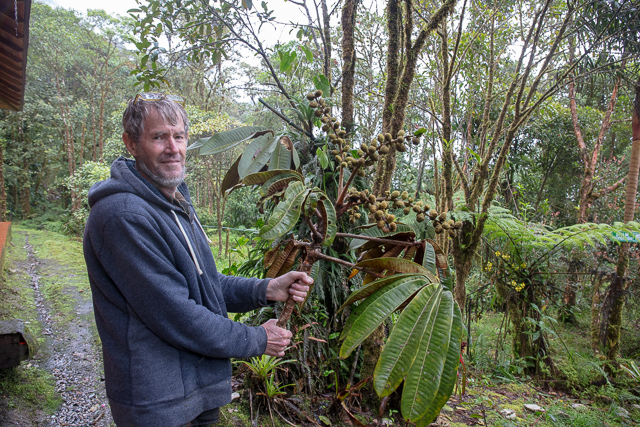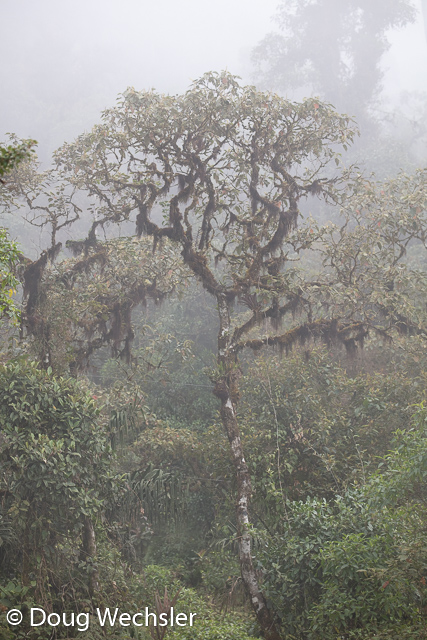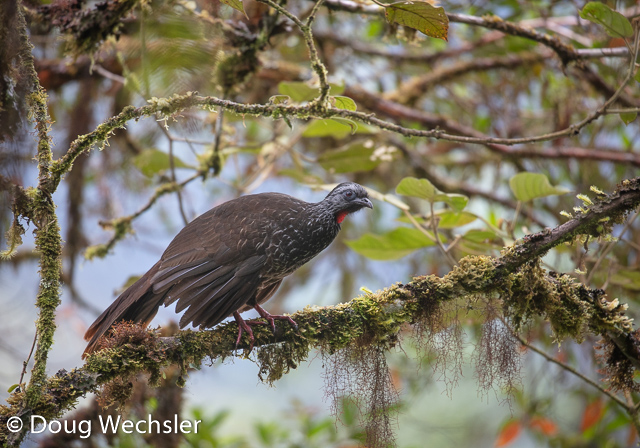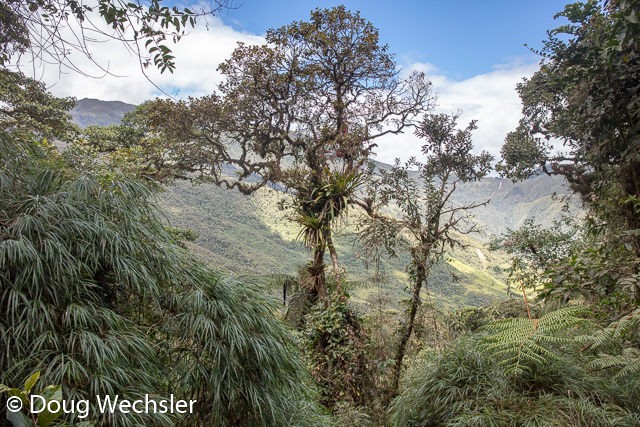At 2,500 m (8,200 ft) the cloud forest at Tapichalaca Reserve of the Jocotoco Conservation Foundation may take your breath away (in more than one sense). As the clouds drift in and out of the forest, you’re presented with an ever-changing landscape.
The silver-leaved cecropia trees are a distinct feature of the subtropical zone of the mountains. Tree ferns below the cecropia add an exotic touch.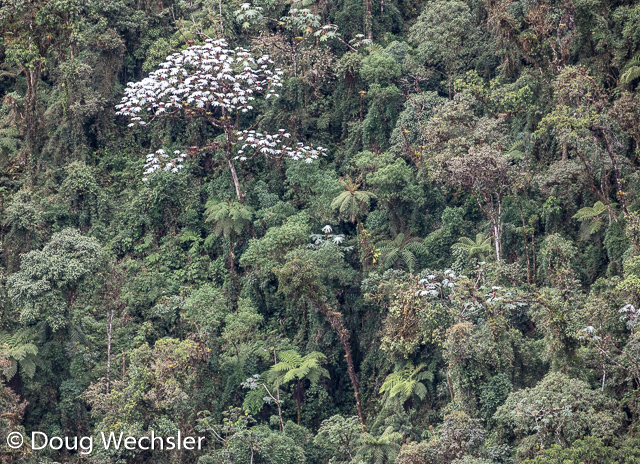
Students from the nearby town of Palanda enjoying the forest.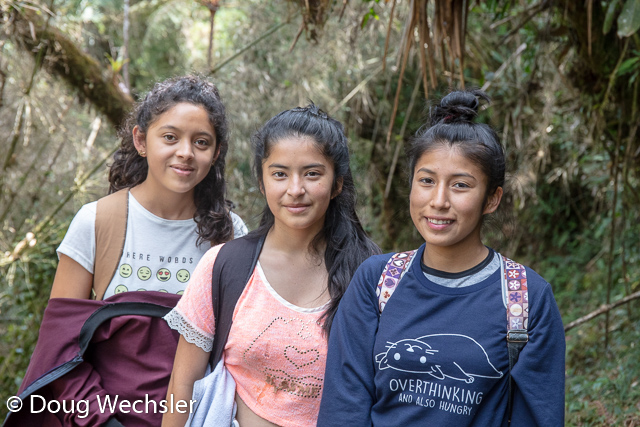
Resembling a Dr Seuss drawing, this tree appears to have a greater mass of epiphytes (plants living on other plants without harming their host) than leaves.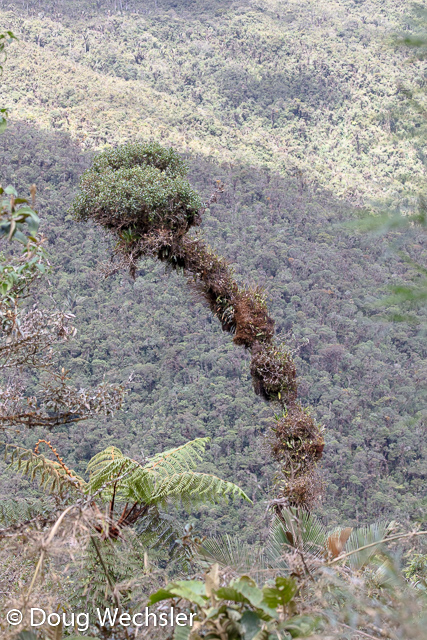
A botany class, led by Dr. David A. Neill of the Universidad Estatal Amazónica, spent 2 ½ rain-soaked days in Tapichalaca and, amazingly, discovered four new species of trees in the Araliaceae. That gives you an idea of how much has yet to be discovered in the cloud forest.
The sangre de drago tree produces a red sap with a variety of medicinal uses, including healing wounds. It is an important food source for the Golden-plumed Parakeet.
The cloud forest harbors many distinctive birds, including the Bearded Guan. Tapichalaca is one of best places to observe this species.
Chusquea bamboo is a common (native) understory plant.
Wax palms stand out as a characteristic tree of the cloud forest. When they die, the dead trunks are crucial nesting habitat for parakeets and other cavity-nesting birds.
Clouds settle in over the towns of Valladolid and Palanda below Tapichalaca Reserve.


